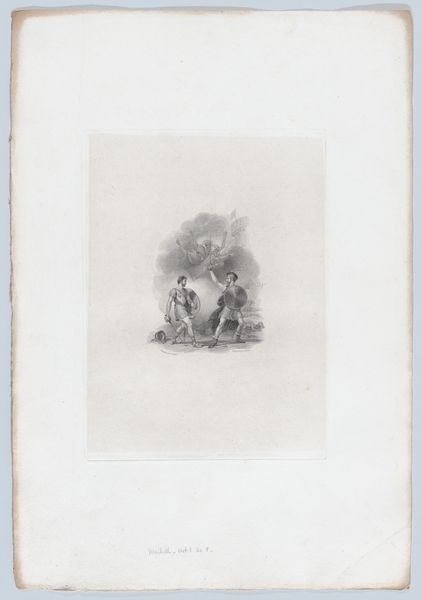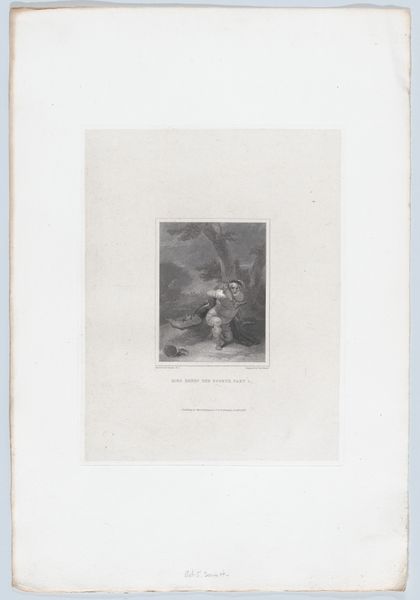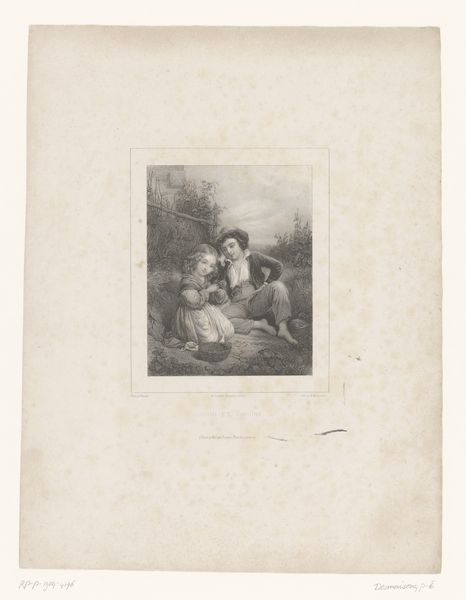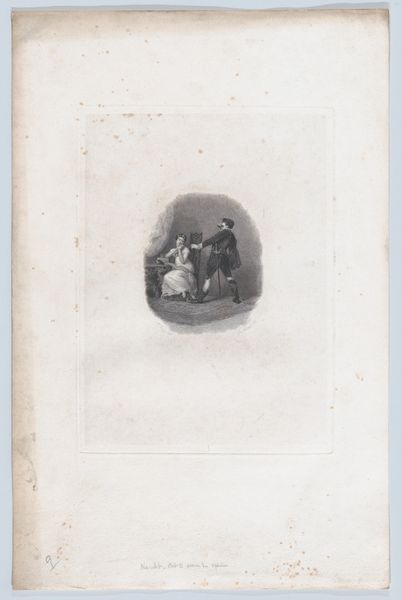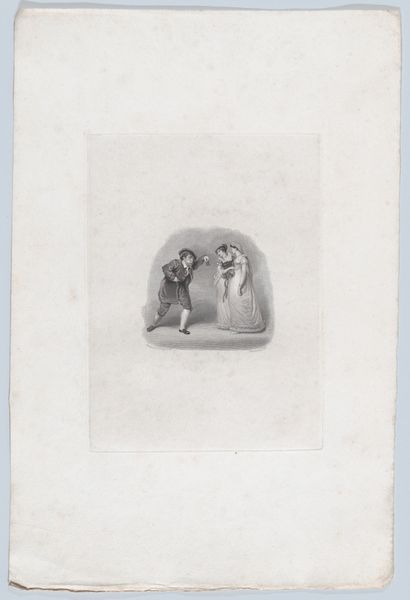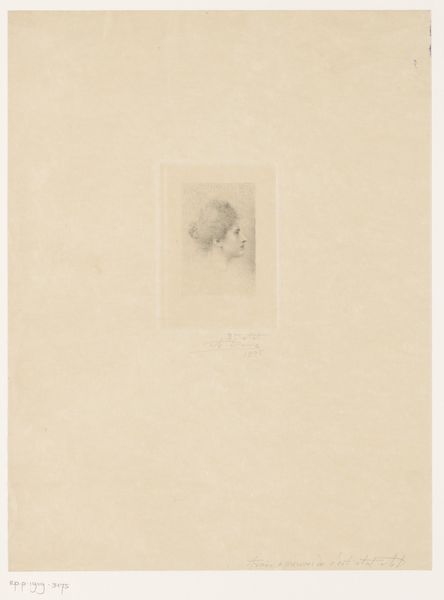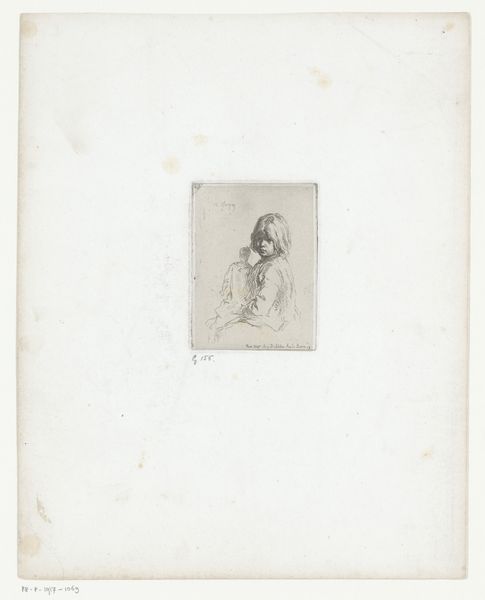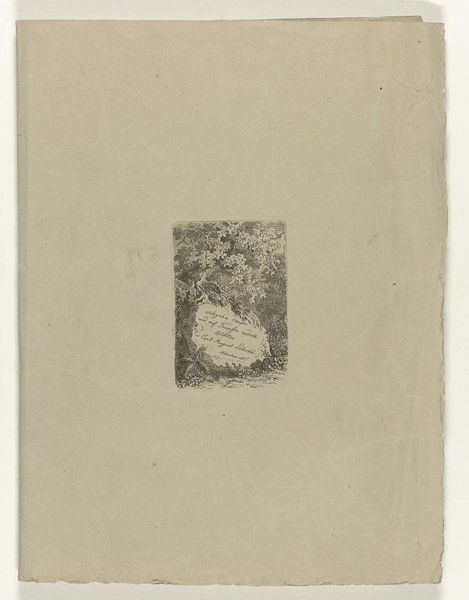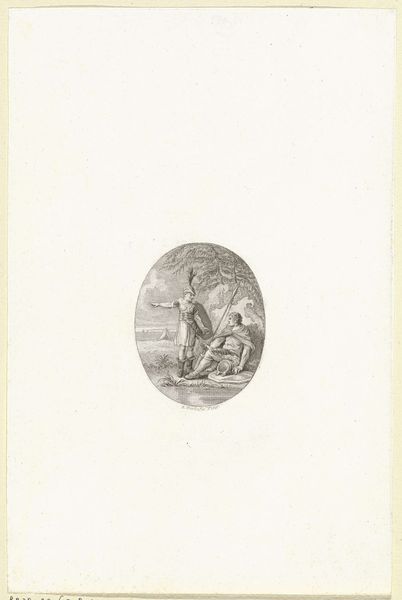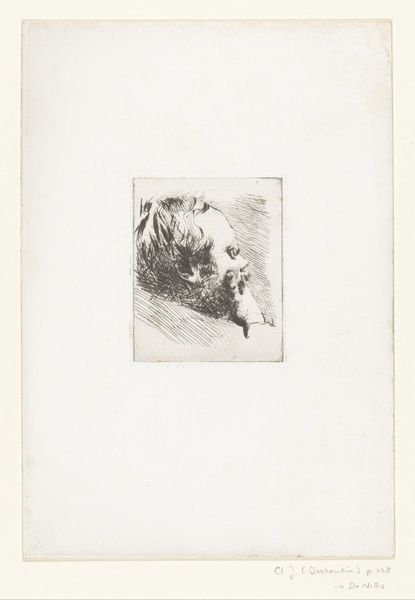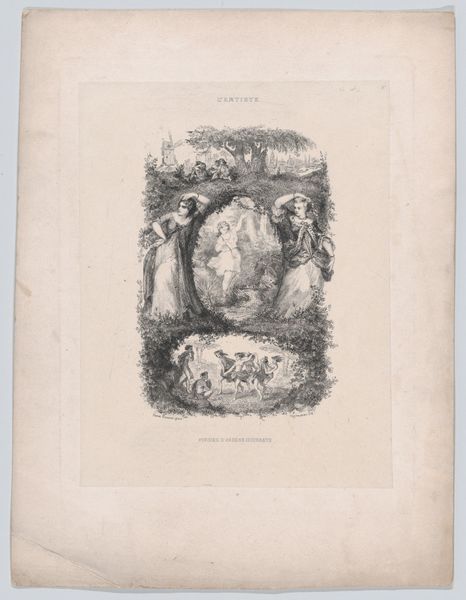
Timon (Shakespeare, Timon of Athens, Act 4, Scene 3) 1827
0:00
0:00
drawing, print, etching, paper, pencil, engraving
#
portrait
#
drawing
#
narrative-art
# print
#
etching
#
figuration
#
paper
#
coloured pencil
#
pencil
#
men
#
history-painting
#
academic-art
#
engraving
Dimensions: Plate: 10 1/16 × 7 11/16 in. (25.5 × 19.5 cm) Sheet: 17 3/8 × 11 9/16 in. (44.2 × 29.3 cm)
Copyright: Public Domain
Editor: Here we have Benjamin Phelps Gibbon’s etching from 1827, titled "Timon (Shakespeare, Timon of Athens, Act 4, Scene 3)." The scene is stark. It gives me this distinct sense of isolation and, perhaps, disillusionment with humanity. What springs to mind when you look at this, especially with its theatrical context? Curator: The funny thing about disillusionment is, it often carries a seed of hope, doesn’t it? Like Timon here, hunkered down, digging for…well, truth? Gibbon captures that in the very contrast of light and shadow, this little vignette carved out of the darkness. Those two figures lurking behind him, judging, perhaps? Or maybe, just maybe, offering a different perspective he's not yet ready for. Ever feel like that, staring into the abyss but afraid to turn around? Editor: Definitely! That tension between the despair and the potential for something else is palpable. So, is Gibbon inviting us to feel Timon's despair, or to question it? Curator: Ah, now that’s the real question, isn't it? Art doesn’t give us easy answers; it throws us into the arena and dares us to wrestle with the uncertainties. Is Timon justified in his misanthropy, or has he become blinded by his own bitterness? Perhaps Gibbon's leaving space for our own judgments, our own experiences with broken trust, to fill in the blanks. Editor: So it’s almost like a mirror, reflecting our own cynical or hopeful outlooks back at us. It's incredible how much is packed into such a small, monochromatic image. I initially saw despair but now, thanks to you, I see an opening. Curator: And that’s the magic, isn’t it? To find in someone else’s perceived ending, a beginning. Or at least a reason to pause, and ask ourselves…what next?
Comments
No comments
Be the first to comment and join the conversation on the ultimate creative platform.
